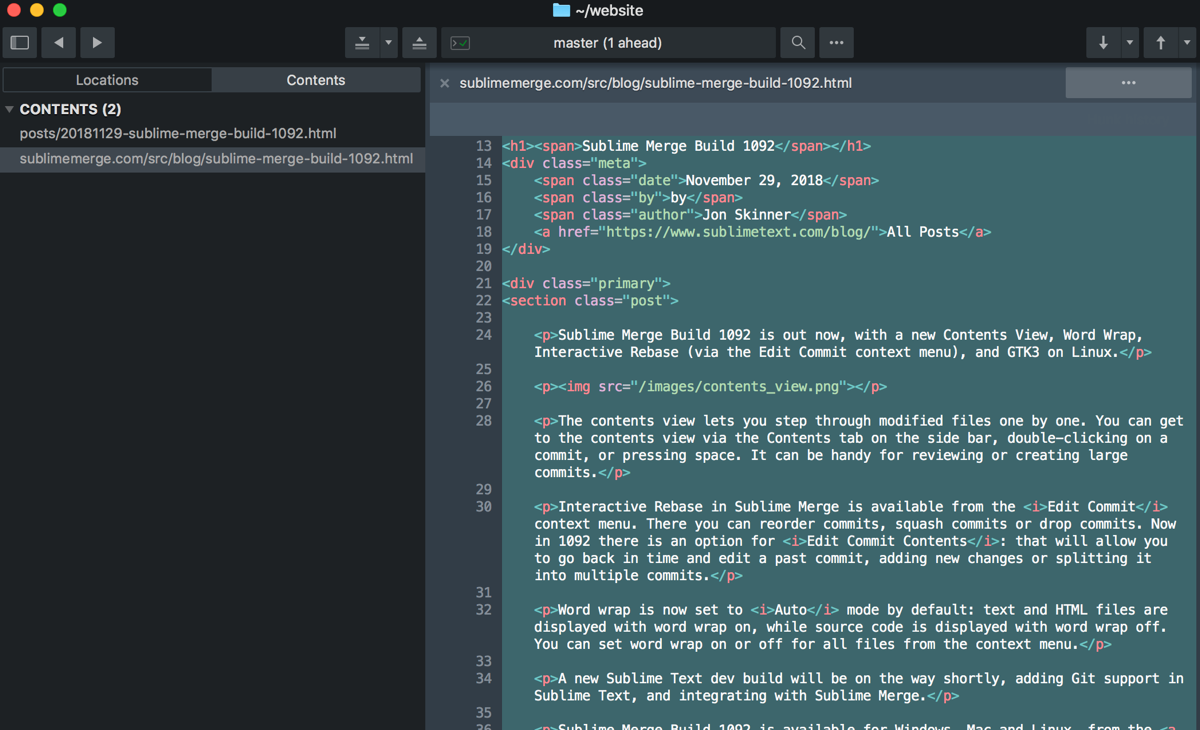
Some “shortcuts” are graced with top level commands: “git pull” is exactly equivalent to “git fetch” followed by “git merge”. The command line syntax is completely arbitrary and inconsistent. Now Git: you have files, a working tree, an index, a local repository, a remote repository, remotes (pointers to remote repositories), commits, treeishes (pointers to commits), branches, a stash… and you need to know all of it. In fact, branches are tags, and files you already know about, so you really need to learn three new things. That’s pretty much everything you need to know. As a point of reference, consider Subversion: you have files, a working directory, a repository, versions, branches, and tags. The information model is complicated – and you need to know all of it. What a pity that it’s so hard to learn, has such an unpleasant command line interface, and treats its users with such utter contempt. It has a powerful distributed model which allows advanced users to do tricky things with branches, and rewriting history.
#SUBLIME MERGE INTERACTIVE REBASE HOW TO#

Teams need to consider several questions when setting their Git rebase vs.

If you're working with a big team, use merge. If you're working alone or on a small team, use rebase. Keeping your entire history may be essential to meet regulatory and compliance needs.Team policies are essential and supersede individual preferences.Rebasing publicly impacts other people in the branch.Rebasing privately affects only the individual (prior to work being pushed).merge workflow question is –– “it depends.” At Perforce, we believe neither the “always merge” nor “always rebase” extreme is necessary. So which one should your team use? Git Rebase Makes Sense for Individuals Jury Is Out for Teams Preserves complete history and chronological order.Cleans intermediate commits by making them a single commit, which can be helpful for DevOps teams.Avoids merge commit “noise” in busy repos with busy branches.Streamlines a potentially complex history.Here are the top three benefits for Git rebase and for Git merge. And others think that you should always merge. Some developers believe you should always rebase. What Is the Difference Between Git Merge and Git Rebase? Git merge adds a new commit, preserving the history.

Git rebase moves a feature branch into a master. Git rebase and merge both integrate changes from one branch into another. In the process, unwanted history is eliminated.Īdvocates of Git rebase like it because it simplifies their review process.

Unlike merging, rebasing flattens history. It transfers the completed work from one branch to another.
#SUBLIME MERGE INTERACTIVE REBASE PATCH#
Git rebase compresses all the changes into a single “patch.” Then it integrates the patch onto the target branch. Git rebase is a command that allows developers to integrate changes from one branch to another. Advocates of it like it because it preserves the history of a branch. When you use Git merge, only the target branch is changed. It takes the contents of a source branch and integrates it with a target branch. Whether branches are created for testing, bug fixes, or other reasons, merging commits changes to another branch. Merging is a common practice for developers. Git merge is a command that allows you to merge branches from Git. Here, we break down what they do and how they differ. Git merge: there's a lot of debate in the Git community about these.


 0 kommentar(er)
0 kommentar(er)
